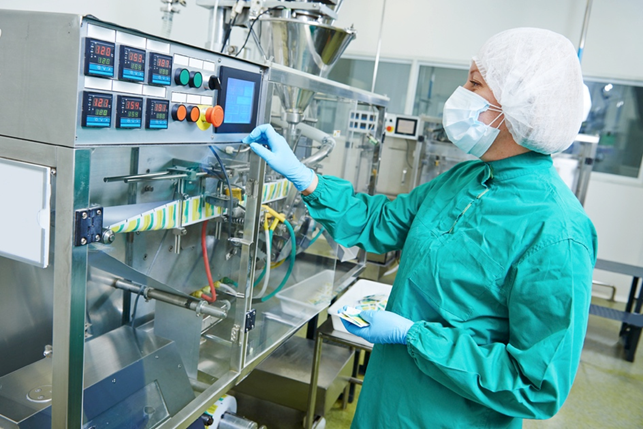
Dr. Thomas Ferris, TEES researcher and assistant professor in the Department of Industrial and Systems Engineering at Texas A&M University, has developed a new two-day course for the National Center for Therapeutics Manufacturing (NCTM) that examines the impact of human error on the safety and quality of operations in biomanufacturing systems. The course applies well-practiced human factors theory and methods to the emerging and growing field of biomanufacturing. Ferris’ course is unique to the field in the way it combines the topics of biomanufacturing systems, human cognition, human error analysis and systems design.
Human error can be described as a “system failure” in which a human activity contributes to an unintended system outcome. Different types of errors tend to occur when humans are operating under different cognitive or behavioral “modes.” For example, a person performing well-practiced, highly “automated” tasks tends to have little conscious engagement in those activities, and errors are caused by failures in attentional focus.
When people encounter a relatively unfamiliar set of circumstances, they are consciously-engaged in the task to a greater extent than with well-practiced activities, and errors tend to be expressed more so in the decisions of which actions to take or how to perform them rather than in a failure in the execution of the selected actions.
“Human Error and Resilience in Biomanufacturing Systems” teaches students how to recognize and analyze errors when they occur, and to recognize system design components that may increase the likelihood of an error occurring eventually. Students learn about cognitive functions such as attention, memory and perception, and how errors emerge as a result of breakdowns in these functions.
As when teaching Texas A&M engineering students, Ferris wants the students in this course to acquire knowledge and skills that can be directly applied in the biomanufacturing workplace, but also to feed an interest in the workings of human cognition in everyday life.
“My teaching philosophy is to inspire an appreciation for not only what the problems (errors) are, but how they occur as a result of basic human tendencies, because I think this helps immensely when students then go to try to solve the problems,” Ferris said. “I also find that the basic science of human cognition, illustrated through common examples in familiar contexts, is interesting to a lot of people, as it is of course to me. Additionally, having deeper insight into how people, including the student learners themselves, think and act in everyday situations can be advantageous in many types of social interactions.”
The course also teaches how to design a system that can be “resilient” to human error by first admitting that error is inevitable. “Error proof is a fantasy,” Ferris said. “As long as a human is involved in either the design or operation of a system, there will be sources for error to emerge.” Instead of identifying every possible way errors might be expressed in a biomanufacturing system and designing safety systems to make each individual error less likely, Ferris champions the approach of building resilient systems that assume human errors will be a natural occurrence and to focus safety design on ways to tolerate human errors, weaken their consequences and prevent sequences of cascading errors that could contribute to a catastrophic system failure.
“We received positive feedback from the participants, most of whom were from contract biomanufacturing organizations,” said Jenny Ligon, assistant director of NCTM. “They were excited to implement the resilience engineering tools they learned to mitigate, or even eliminate, human error in their automated manufacturing systems.”
Ferris said he looks to be a pioneer for human factors science, as well as practice, in the emerging biomanufacturing domain, and hopes to make a positive impact on biomanufacturing operations for current and aspiring practitioners in that domain as well as scientists and researchers in bioprocessing fields. He is also excited to bring the domain knowledge being gained through interactions with members of the biomanufacturing industry back into his classes for Texas A&M students, providing a new set of real-world case studies and anecdotes in which to illustrate the concepts, tools and techniques he teaches for building stronger, more resilient systems and managing human error.
NCTM is a joint center of Texas A&M and the Texas A&M Engineering Experiment Station (TEES).
